ZeroCater – Snacks & Kitchens
Designing a subscription-based office snack and kitchen service for modern workplaces.
Live product demo of the Snacks & Kitchens dashboard in action.
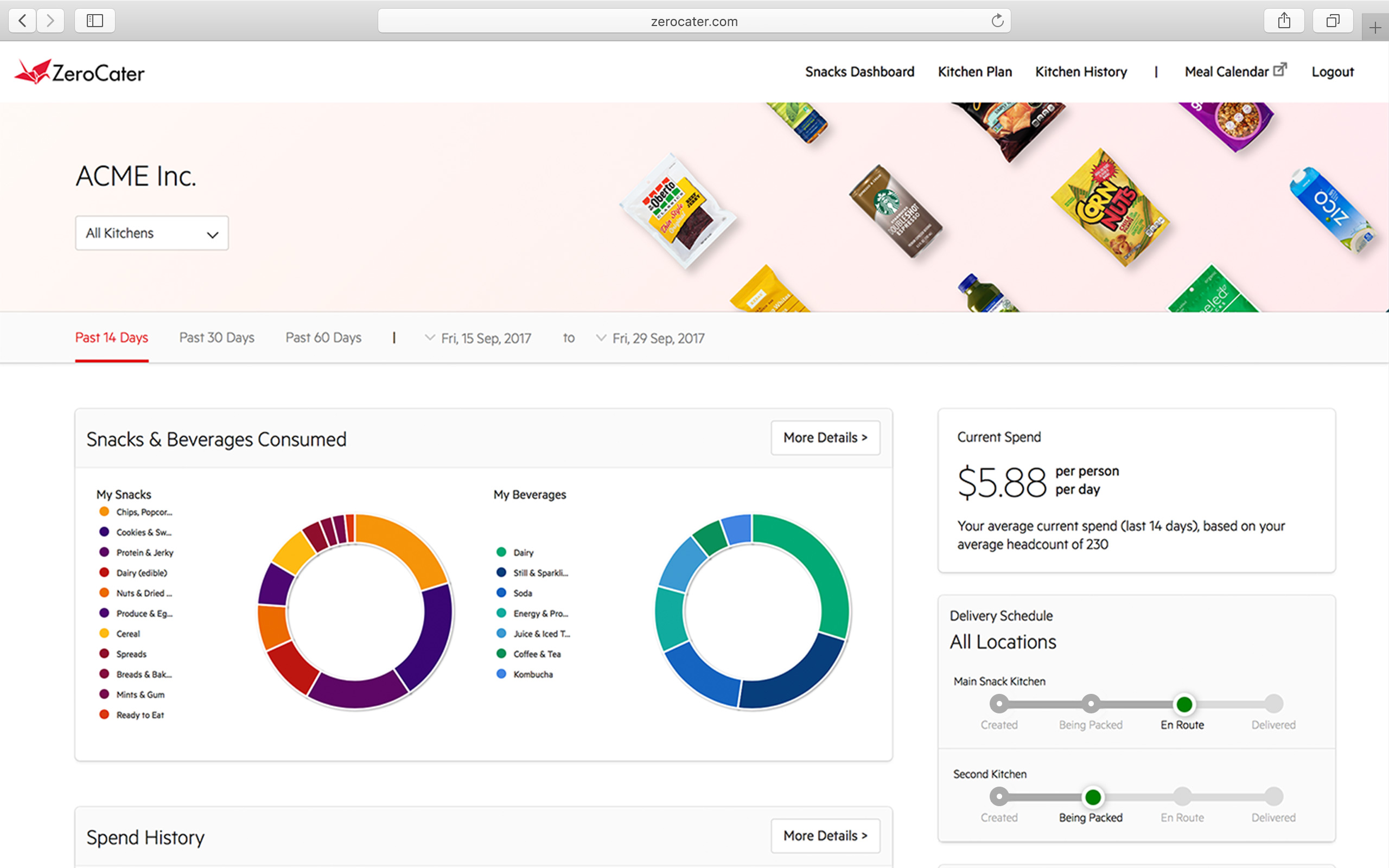
Curated snack selections for every office.
Problem
Offices needed a scalable, subscription-based snacks & kitchens service with clear inventory, scheduling, and feedback—without operational chaos.
Solution
A unified dashboard with reusable components, operational workflows, and feedback loops that connected customers, operations, and vendors.
Impact
Faster coordination, higher customer clarity, and a repeatable model used across product teams.
Overview
As Product Designer and Front-End Engineer, I led the creation of ZeroCater's Snacks & Kitchens dashboard—a subscription-based platform that redefined office catering. Through user research, market analysis, and hands-on development work, I delivered a seamless experience for office managers to manage snack and kitchen supplies, track usage, and optimize workplace satisfaction.
The dashboard's intuitive design and data-driven insights empowered clients to make informed decisions, setting a new standard for workplace food services and driving ZeroCater's market expansion.
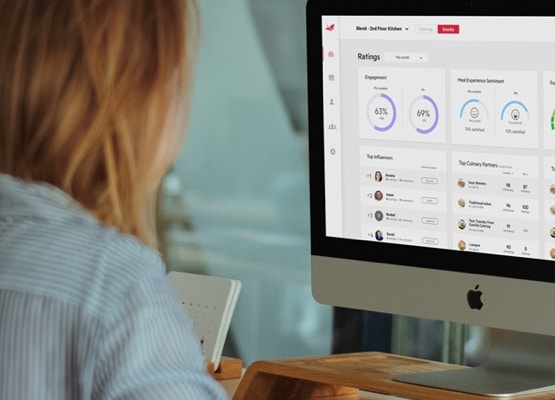
Customer dashboard for managing snack and kitchen subscriptions.
Dashboard Modules
Inventory
Stock levels, reorder points, consumption patterns.
Scheduling
Deliveries, lead times, service windows.
Vendors
Supplier coordination, substitutions, specials.
Budgets
Spend tracking, caps, approvals.
Process
- • Conducted stakeholder interviews, market analysis, and user behavior studies to inform design.
- • Synthesized complex information into user-friendly dashboard designs through iterative feedback.
- • Implemented front-end code directly, participating in engineering workflows with GitHub pull requests and code reviews.
- • Developed a design system and dashboard model for future product development at ZeroCater.
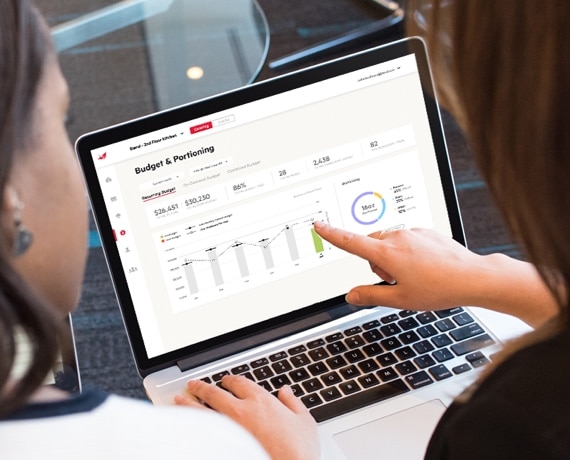
Data-driven insights for optimizing office snack programs.
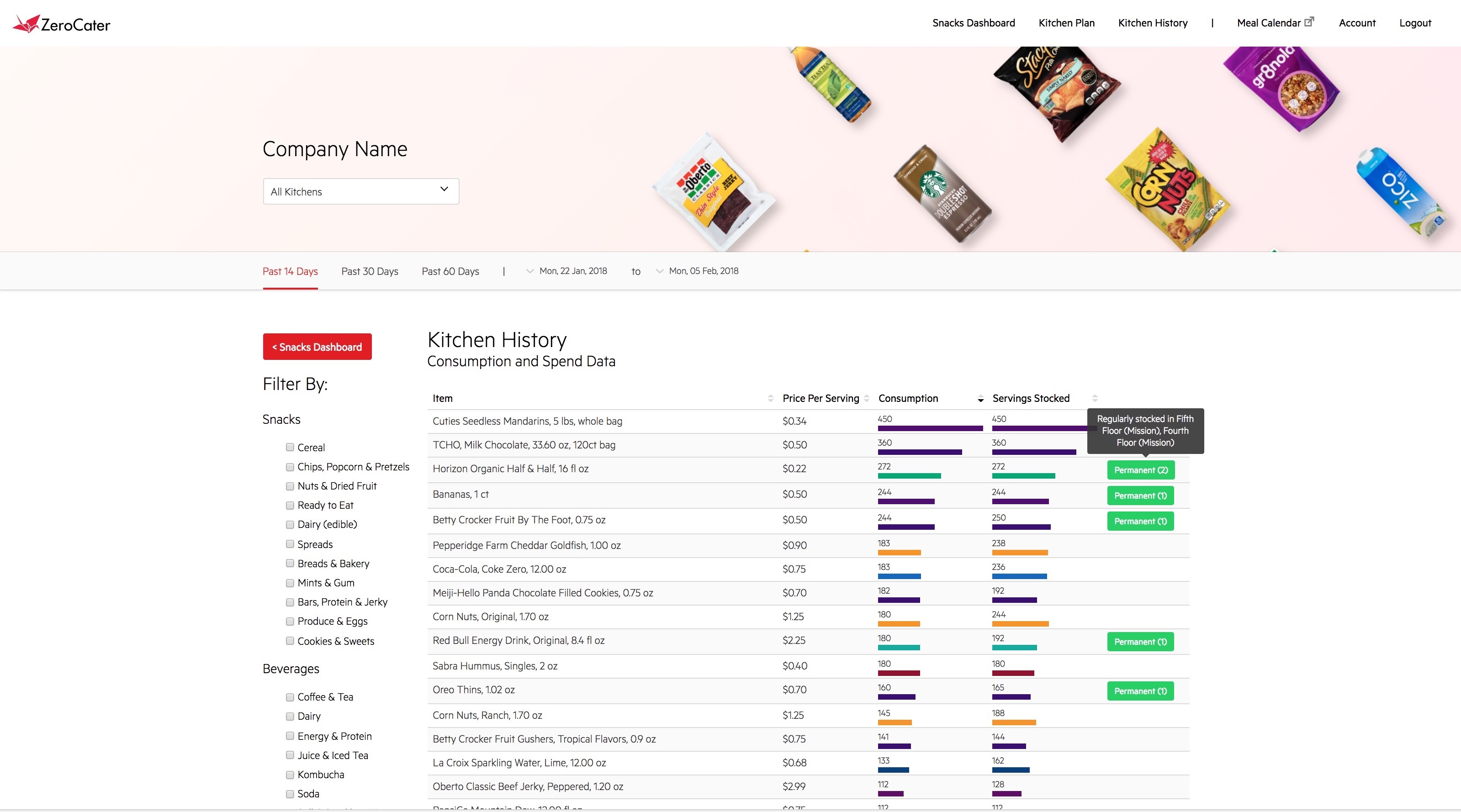
Snacks & Kitchens dashboard for office managers.
Operational Workflow & Feedback
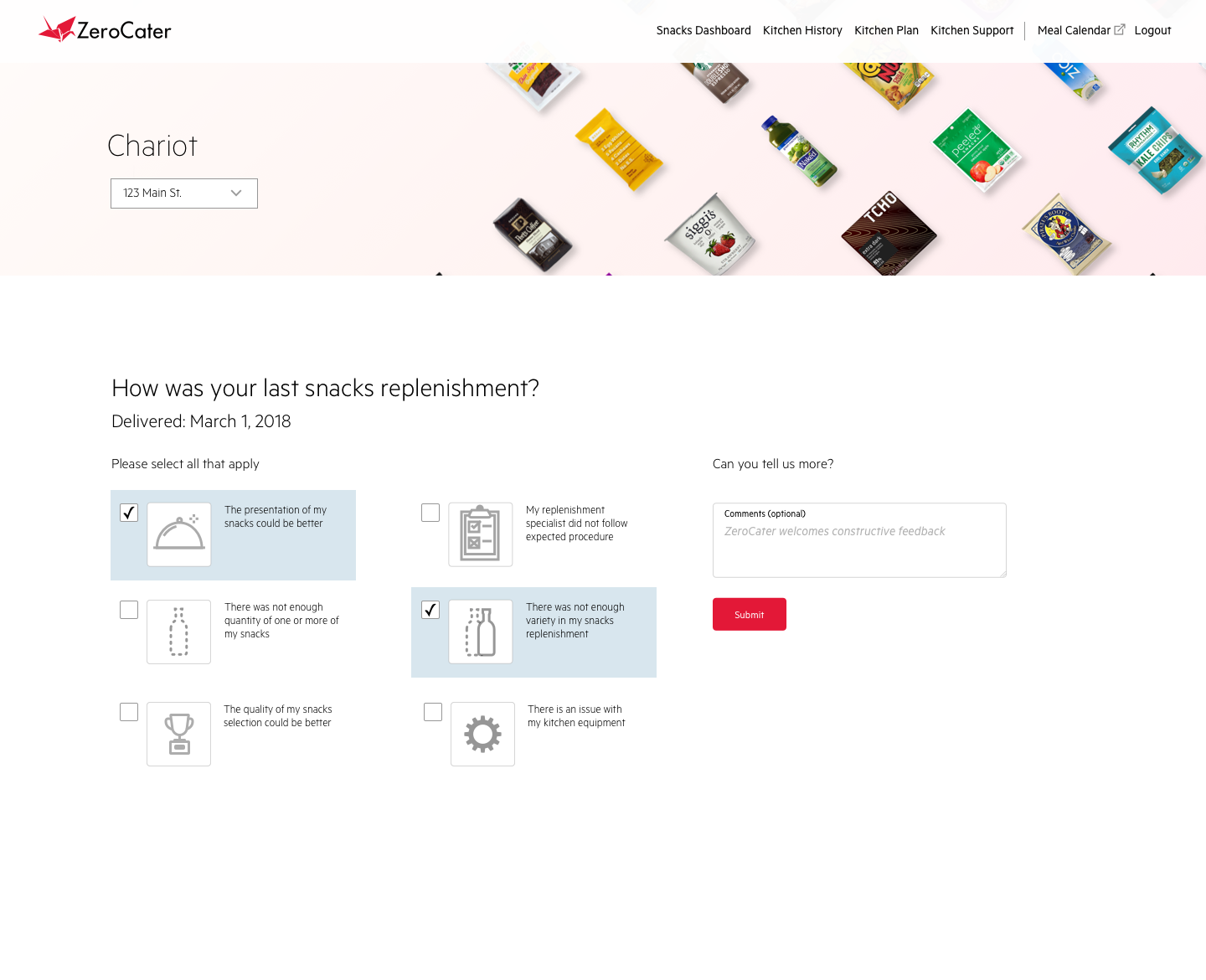
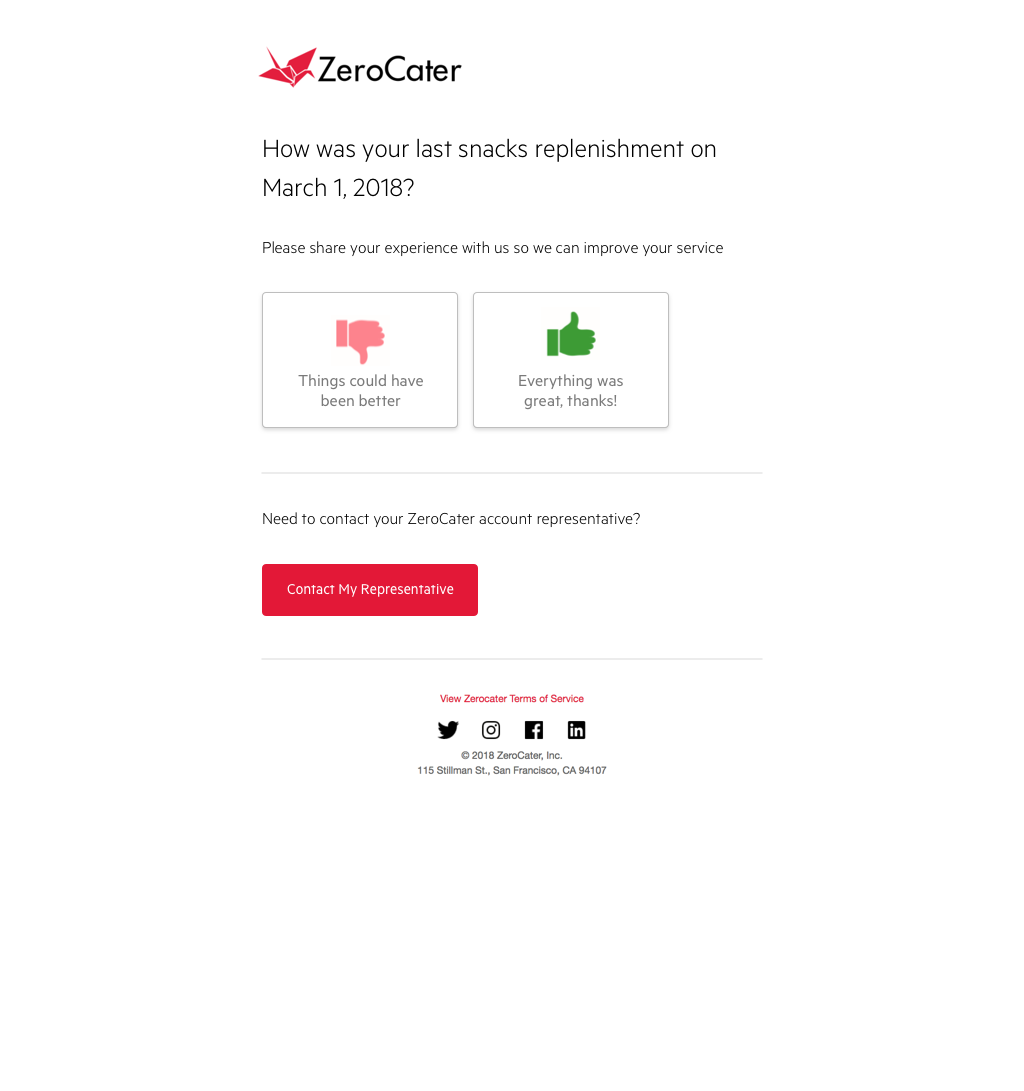
Feedback flows connected service quality to reorders and scheduling, closing the loop between customers and operations.
Email templates for this program are part of the ZeroCater Design System.
My Contributions
- • Led product design for Snacks & Kitchens from research to delivery
- • Built production UI as a designer-developer with individual PRs
- • Established dashboard component patterns and design tokens
- • Created user flows, prototypes, and ran feedback sessions
- • Collaborated with engineering on code reviews and releases
User Flows & Research
Understanding user journeys was central to the design process. We mapped out comprehensive user flows to ensure the snacks and kitchen management experience was intuitive and efficient for office managers.
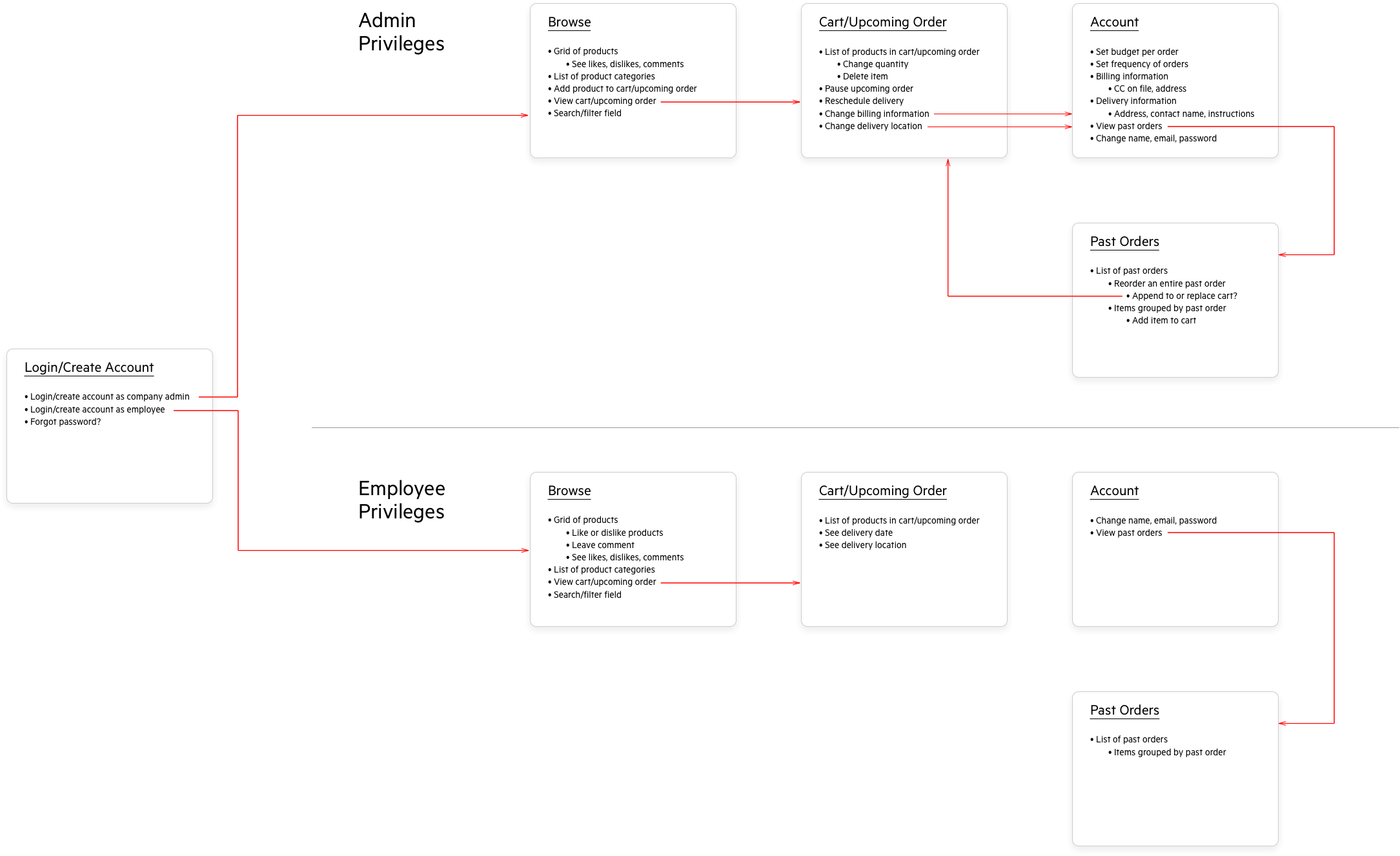
User flows for the Snacks & Kitchens platform.
Results
The Snacks & Kitchens product launch expanded ZeroCater's market reach, improved customer satisfaction, and became a benchmark for future product development. The dashboard design enhanced user engagement and streamlined subscription management for clients.
- • Successful launch and market expansion
- • Enhanced customer satisfaction and engagement
- • Model for future product development at ZeroCater
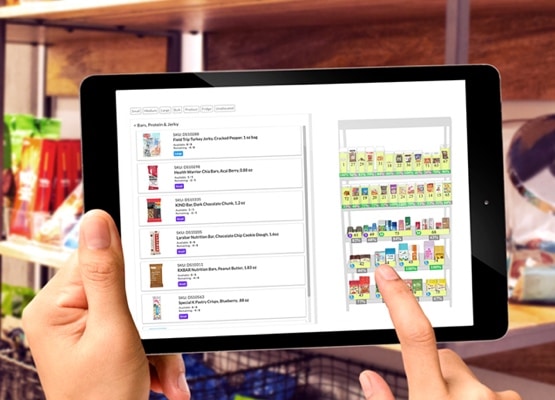
Onsite staff powered by technology for seamless service.